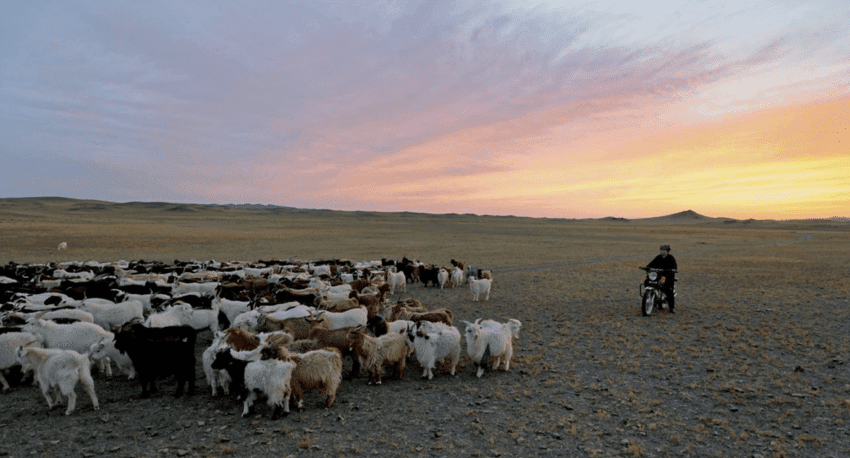
Cashmere: it’s an iconic part of luxury fashion and a silky soft way to keep warm in the winter. But there’s a lot to unravel about the way it’s made. Cashmere wool comes from goats living in harsh climates like the Gobi Desert in Mongolia. The drier the climate, the finer the wool—and the bigger the risk to the animals, the herders who raise them, and the ecosystem. An unlikely group of allies have been working together to help manage those risks and make the cashmere industry more sustainable.
Luxury fashion conglomerate Kering, Mongolian mining company Oyu Tolgoi, nonprofit Wildlife Conservation Society, and scientists from NASA and Stanford University collaboration called the Natural Capital Project (NatCap) teamed up to form the Sustainable Cashmere Project. These disparate organizations all wanted to reduce the impacts cashmere has and reverse damage done to the Gobi Desert rangelands.
Oyu Tolgoi’s financial backers required the mining company to make a 15 percent improvement to the area’s conditions. Kering wanted to secure a sustainable and high-quality source of cashmere for their supply chain. The scientists at NatCap aimed to help them tease apart the impacts that rangeland management and climate had on rangeland conditions in the Gobi.
Click here for more information.